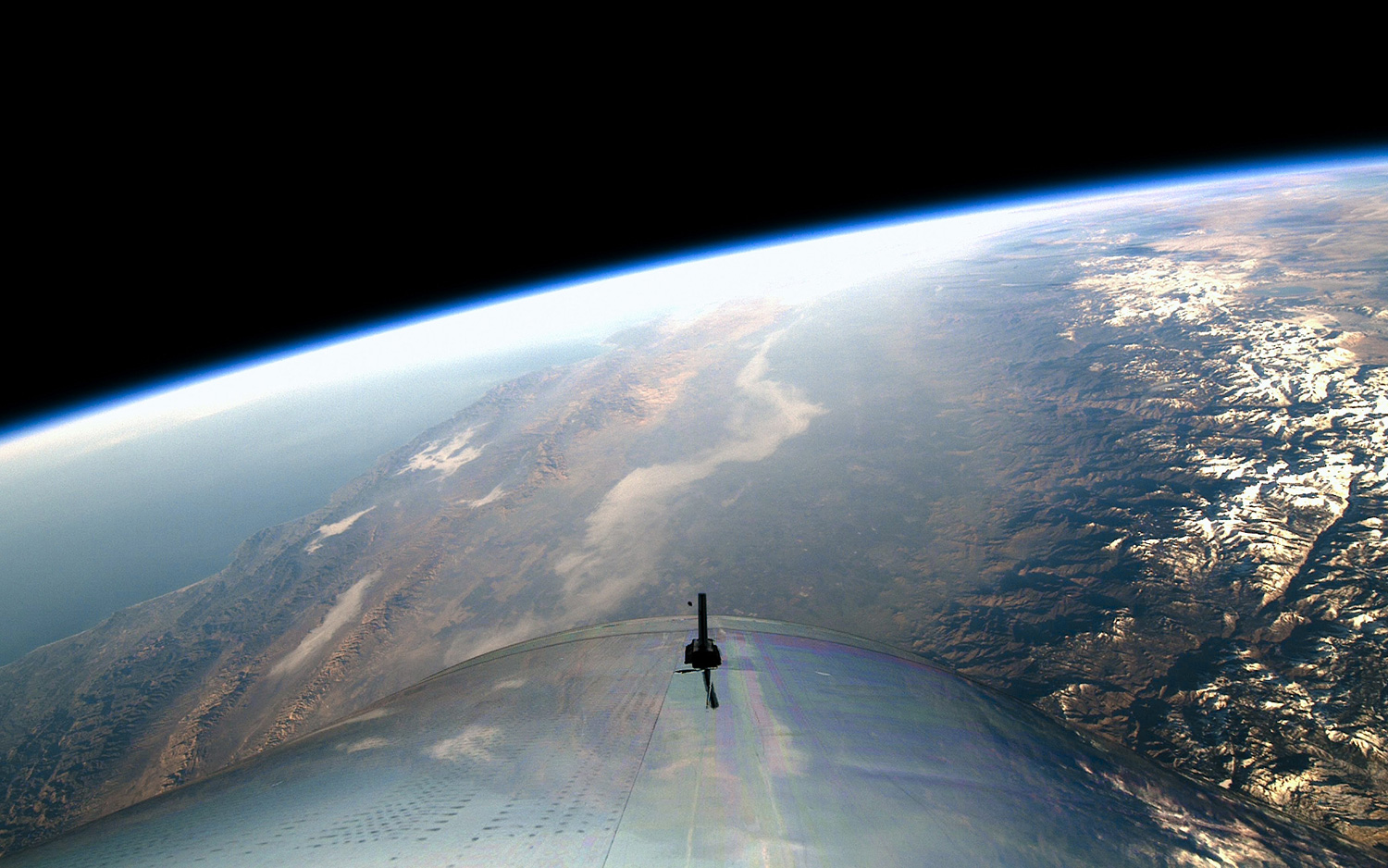Virgin Galactic outlines SpaceShipTwo test flight plan to snag FAA license for passenger trips

A commercial operator's license may be just one spaceflight away for Virgin Galactic.
The company's newest SpaceShipTwo vehicle, VSS Unity, has reached suborbital space twice on piloted test flights, first in December 2018 and then again in February 2019. One or two more such missions should be enough to satisfy the U.S. Federal Aviation Administration's (FAA) licensing requirements, said George Whitesides, Virgin Galactic's Chief Space Officer.
"Our hope is that the data that we get from that [coming] flight — or maybe one more, but sort of within one or two flights — gives us the final data we need to clear to clear our commercial operating license," Whitesides said during a news conference on Tuesday (July 28).
Related: How Virgin Galactic's SpaceShipTwo works (infographic)
The main focus of the media event was to discuss SpaceShipTwo's cabin interior, the design of which Virgin Galactic unveiled on Tuesday.
The six-passenger, two-pilot SpaceShipTwo is hauled aloft by a carrier plane known as WhiteKnightTwo. At an altitude of about 50,000 feet (15,000 meters), SpaceShipTwo separates and fires up its onboard rocket motor, which powers the winged craft up to suborbital space.
Passengers aboard the SpaceShipTwo will get to see the curvature of Earth against the blackness of space and experience a few minutes of weightlessness before coming back down for a runway landing at New Mexico's Spaceport America, Virgin Galactic's commercial hub.
Breaking space news, the latest updates on rocket launches, skywatching events and more!
About 600 people have booked a seat aboard the suborbital spaceliner, at a price (most recently) of $250,000 per ticket. That figure is likely to increase a bit in the near future, Whitesides said on Tuesday. But he also stressed that Virgin Galactic aims to bring the price down over the long term, making spaceflight accessible to more people around the globe.
VSS Unity's two spaceflights to date both originated from Mojave Air and Space Port in California, which is near the headquarters of The Spaceship Company, Virgin Galactic's manufacturing subsidiary. But Spaceport America will host the company's coming space missions; VSS Unity and its carrier plane, a WhiteKnightTwo vehicle known as VMS Eve, relocated to the New Mexico site earlier this year to finish out their test campaign.
That test campaign won't end with the upcoming one or two piloted flights, even if they net Virgin Galactic a commercial operating license from the FAA.
The final phase "will be a small number of flights that will have some test passengers — not just one, but actually four — in the back, where we'll do the final protocols of testing out the customer experience," Whitesides said. (The February 2019 test flight carried one passenger — Beth Moses, Virgin Galactic's chief astronaut instructor.)
"And, assuming that all goes well, we would then be in a position to fly Sir Richard to space," he added. "That will obviously be a huge moment for the company and for everyone else."
Sir Richard is Richard Branson, founder of the Virgin Group of companies, which includes Virgin Galactic. Branson has repeatedly stressed that he and his family plan to be on the first operational flight of SpaceShipTwo.
Branson's mission will be the first of many flown by multiple SpaceShipTwo vehicles over the coming years, if all goes according to Virgin Galactic's plan. Two additional SpaceShipTwos are under construction in California, and Virgin Galactic's hangar at Spaceport America can fit five of the space planes and two WhiteKnightTwos simultaneously.
Mike Wall is the author of "Out There" (Grand Central Publishing, 2018; illustrated by Karl Tate), a book about the search for alien life. Follow him on Twitter @michaeldwall. Follow us on Twitter @Spacedotcom or Facebook.

Michael Wall is a Senior Space Writer with Space.com and joined the team in 2010. He primarily covers exoplanets, spaceflight and military space, but has been known to dabble in the space art beat. His book about the search for alien life, "Out There," was published on Nov. 13, 2018. Before becoming a science writer, Michael worked as a herpetologist and wildlife biologist. He has a Ph.D. in evolutionary biology from the University of Sydney, Australia, a bachelor's degree from the University of Arizona, and a graduate certificate in science writing from the University of California, Santa Cruz. To find out what his latest project is, you can follow Michael on Twitter.
